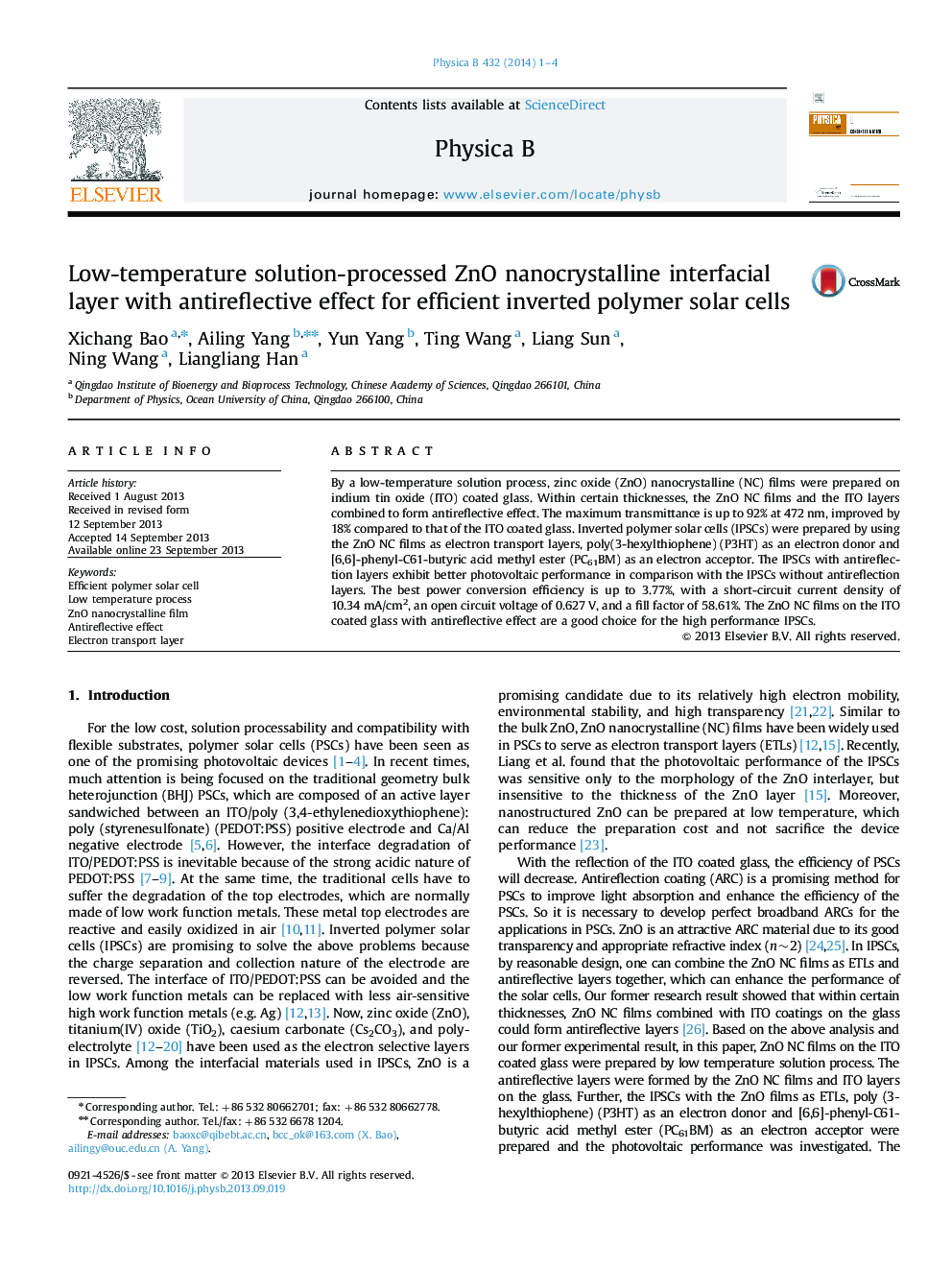| Article ID | Journal | Published Year | Pages | File Type |
|---|---|---|---|---|
| 1809989 | Physica B: Condensed Matter | 2014 | 4 Pages |
By a low-temperature solution process, zinc oxide (ZnO) nanocrystalline (NC) films were prepared on indium tin oxide (ITO) coated glass. Within certain thicknesses, the ZnO NC films and the ITO layers combined to form antireflective effect. The maximum transmittance is up to 92% at 472 nm, improved by 18% compared to that of the ITO coated glass. Inverted polymer solar cells (IPSCs) were prepared by using the ZnO NC films as electron transport layers, poly(3-hexylthiophene) (P3HT) as an electron donor and [6,6]-phenyl-C61-butyric acid methyl ester (PC61BM) as an electron acceptor. The IPSCs with antireflection layers exhibit better photovoltaic performance in comparison with the IPSCs without antireflection layers. The best power conversion efficiency is up to 3.77%, with a short-circuit current density of 10.34 mA/cm2, an open circuit voltage of 0.627 V, and a fill factor of 58.61%. The ZnO NC films on the ITO coated glass with antireflective effect are a good choice for the high performance IPSCs.
